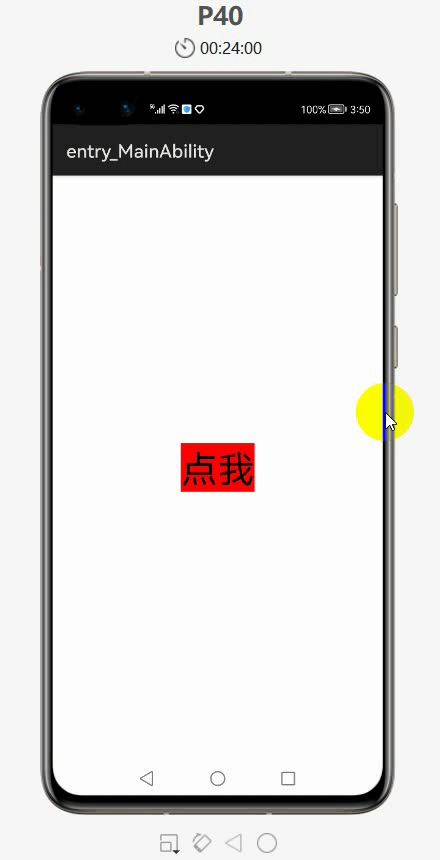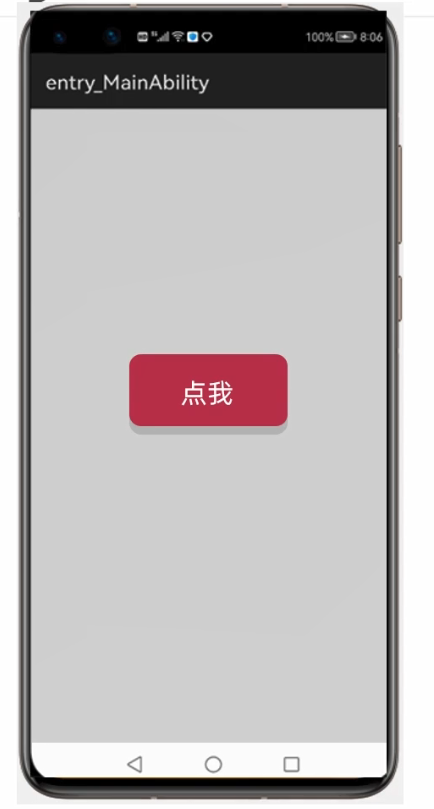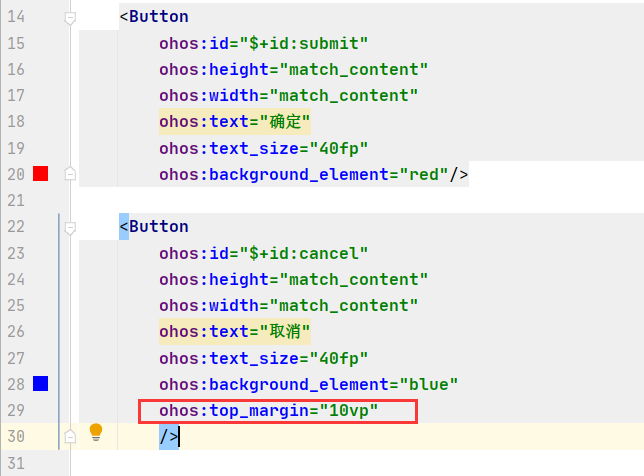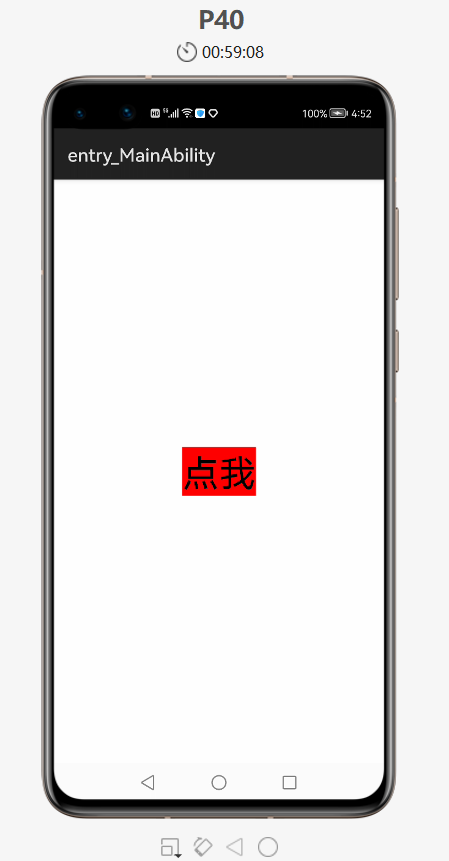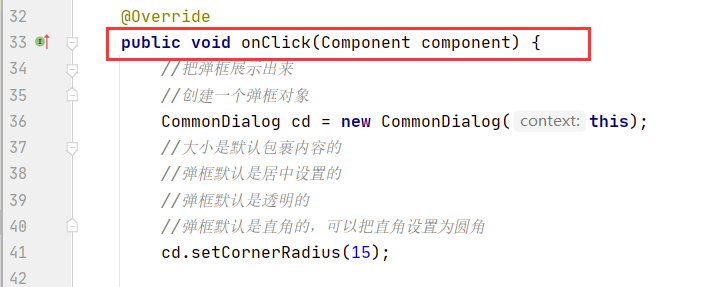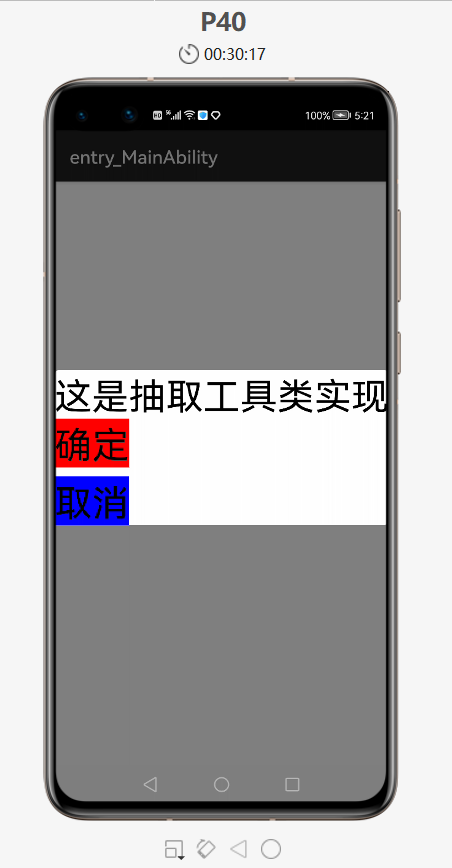HarmonyOS實戰—CommonDialog組件的基本使用
Table of Contents
彈框組件
1. CommonDialog 組成和使用
2. CommonDialog 自定義布局使用
3. 優化代碼——抽取彈框工具類
彈框組件
在HarmonyOS當中,常用的彈框主要有兩種:
1.第一種是普通彈框(CommonDialog),提示用戶并讓用戶進行對應的操作的,比如使用打車軟件的時候,如果手機沒有開定位,就會有彈框提示,讓你在手機中開啟定位,這就是一個普通彈框,給你作為一個信息的提示,并且做一些操作。
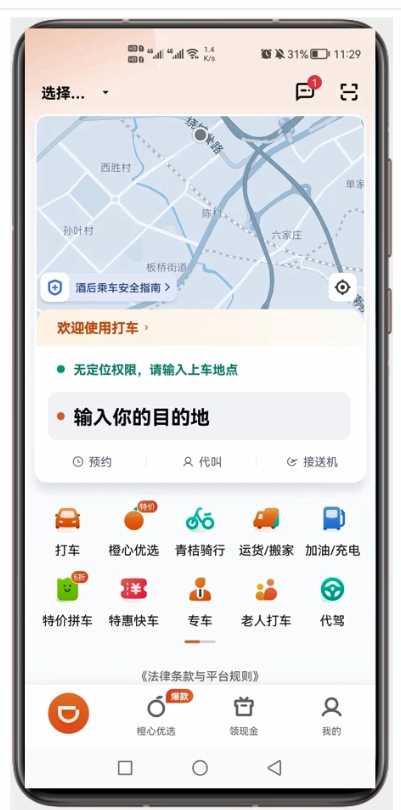
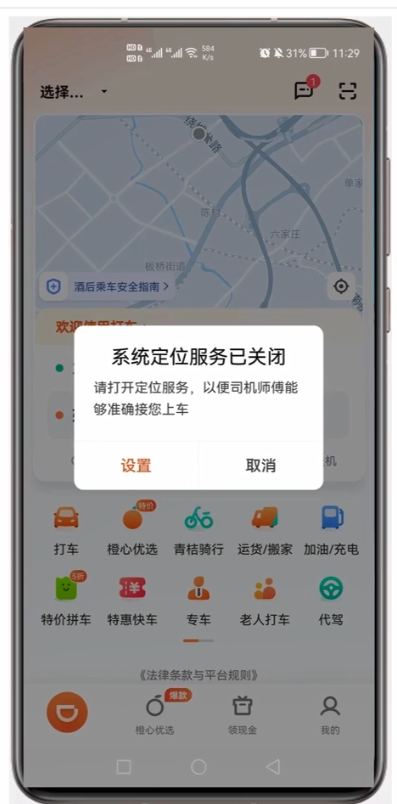
2. 第二種消息提示彈框(ToastDialog),如:在每次打開“小破站”APP的時候,都會彈出提示,這些也是彈框。這些彈框不需要用戶選擇的,只是告訴用戶一些消息而已
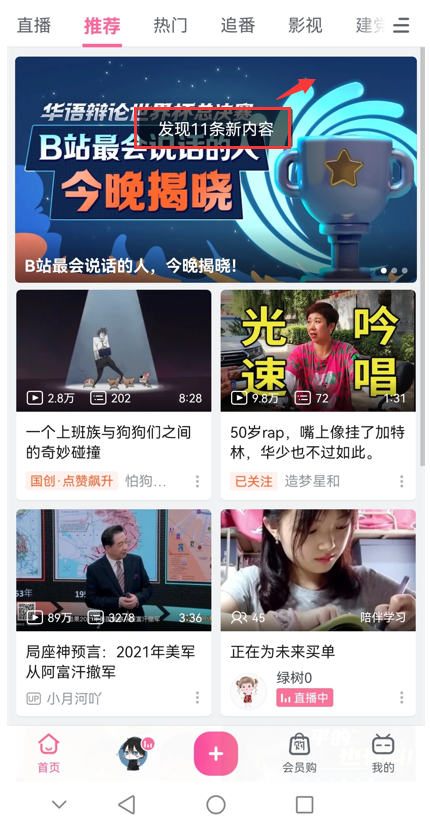
1. CommonDialog 組成和使用
- 在鴻蒙當中,這種普通和彈框其實是有默認布局的
- 下面的選擇按鈕最多只有三個
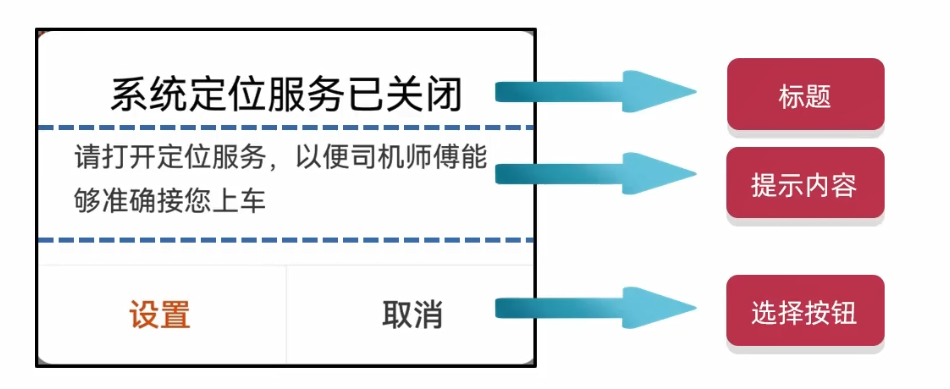
- 彈框并不是APP啟動時立馬彈出來的,一般會有兩種情況:
1.點擊按鈕的時候會彈出來
2.當程序滿足一定要求的時候也會彈出來
項目案例:
- 新建項目:DialogApplication
ability_main
- <?xml version="1.0" encoding="utf-8"?>
- <DirectionalLayout
- xmlns:ohos="http://schemas.huawei.com/res/ohos"
- ohos:height="match_parent"
- ohos:width="match_parent"
- ohos:alignment="center"
- ohos:orientation="vertical">
- <Button
- ohos:id="$+id:but1"
- ohos:height="match_content"
- ohos:width="match_content"
- ohos:text="點我"
- ohos:text_size="40vp"
- ohos:background_element="red"/>
- </DirectionalLayout>
MainAbilitySlice
- package com.xdr630.dialogapplication.slice;
- import com.xdr630.dialogapplication.ResourceTable;
- import ohos.aafwk.ability.AbilitySlice;
- import ohos.aafwk.content.Intent;
- import ohos.agp.components.Button;
- import ohos.agp.components.Component;
- import ohos.agp.window.dialog.CommonDialog;
- import ohos.agp.window.dialog.IDialog;
- public class MainAbilitySlice extends AbilitySlice implements Component.ClickedListener {
- @Override
- public void onStart(Intent intent) {
- super.onStart(intent);
- super.setUIContent(ResourceTable.Layout_ability_main);
- //1.找到按鈕
- Button but1 = (Button) findComponentById(ResourceTable.Id_but1);
- //2.給按鈕添加點擊事件
- but1.setClickedListener(this);
- }
- @Override
- public void onActive() {
- super.onActive();
- }
- @Override
- public void onForeground(Intent intent) {
- super.onForeground(intent);
- }
- @Override
- public void onClick(Component component) {
- //把普通彈框彈出來就可以了
- //1.創建彈框對象
- // this:當前彈框展示在當前界面中
- CommonDialog cd = new CommonDialog(this);
- //2.因為彈框里面是有默認布局的
- //設置標題
- cd.setTitleText("系統定位服務已關閉");
- //設置內容
- cd.setContentText("請打開定位服務,以便司機師傅能夠準確接您上車");
- //設置按鈕
- //參數1:按鈕的索引 0 1 2
- //參數2:按鈕上的文字
- //參數3:點擊了按鈕之后能做什么
- cd.setButton(0, "設置", new IDialog.ClickedListener() {
- @Override
- public void onClick(IDialog iDialog, int i) {
- //寫上點擊了之后設置,要做的事情
- //如果點擊了之后不需要做任何事情,在第三個參數中傳遞 null 就可以了
- //因為這里點擊了設置還無法跳轉到設置定位的那個界面,所以先不寫,等以后學習了再補在這里
- }
- });
- //設置取消按鈕
- cd.setButton(1,"取消",null);
- //把彈框顯示出來
- cd.show();
- }
- }
- 運行:
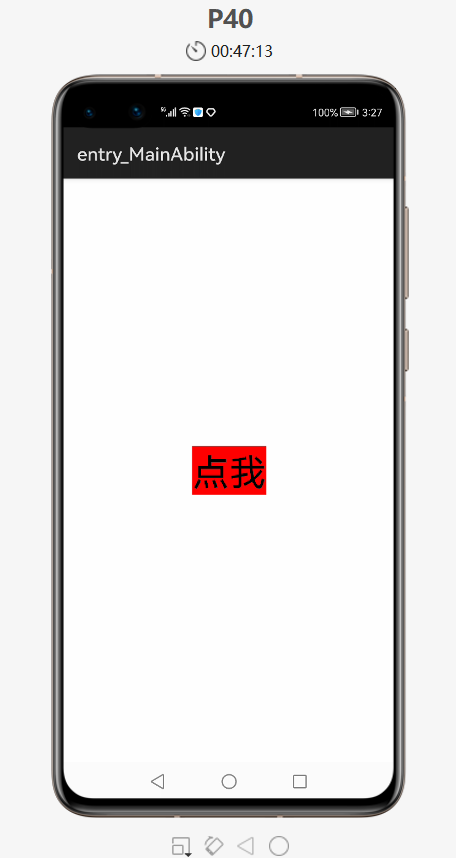
- 點擊后:
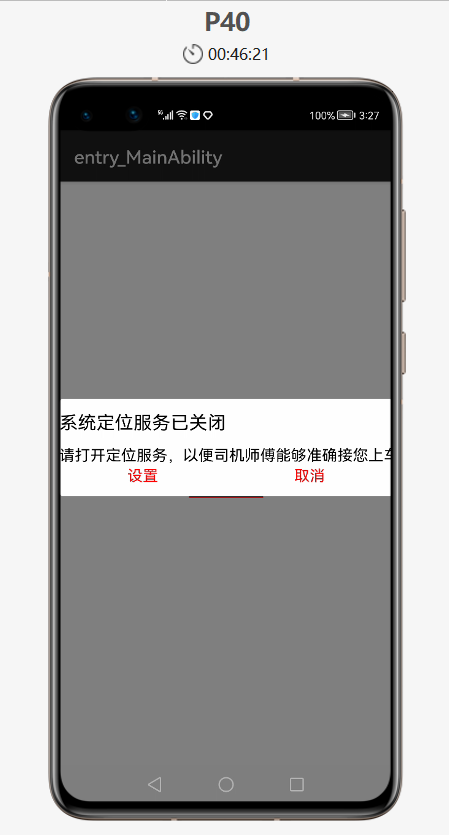
- 當再次點擊灰色區域也沒有反應
- 點擊或 取消 按鈕時沒有任何反應,因為在上面的那里設置了 null
一般點擊彈框的兩種情況:
- 點擊灰色區域也不能取消,必須點擊取消按鈕才能取消彈框
- 點擊灰色區域或取消按鈕都能達到取消彈框的效果
下面就實現上面這兩種情況:
1.點擊灰色區域也能取消按鈕的情況,在上面的代碼基礎上補充如下

2.當鼠標點擊取消按鈕的時候也能讓彈框消失,把上面設置取消按鈕的 null 設置為:
- 運行,點擊后:
- 實現了上面的兩種情況
2. CommonDialog 自定義布局使用
- CommonDialog 里面有默認的布局,布局由如下三部分組成:
- 所以只要直接調用方法給里面設置一些文本內容就可以了
- 下面就介紹下自定義彈框里的內容
案例如下:在主界面上有一個按鈕,點擊了一個按鈕后會出現彈框
- 彈框里面有三個東西:一行文本和兩個按鈕
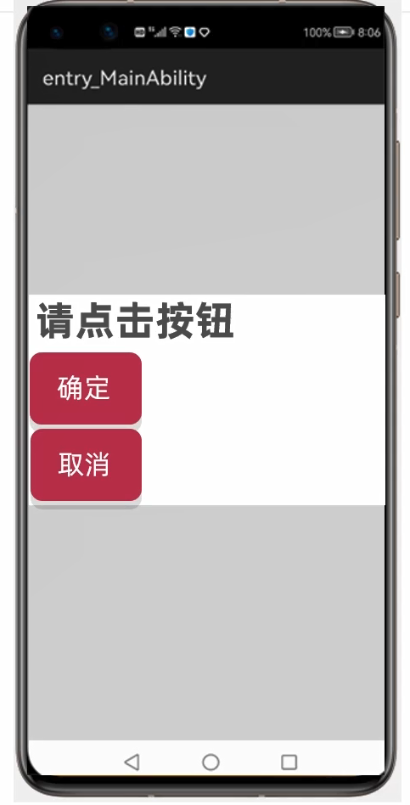
- 當點擊了 確定 按鈕后,上面的文本就會變成“點擊了確定按鈕”,當點擊了 取消 按鈕后彈框就會消失
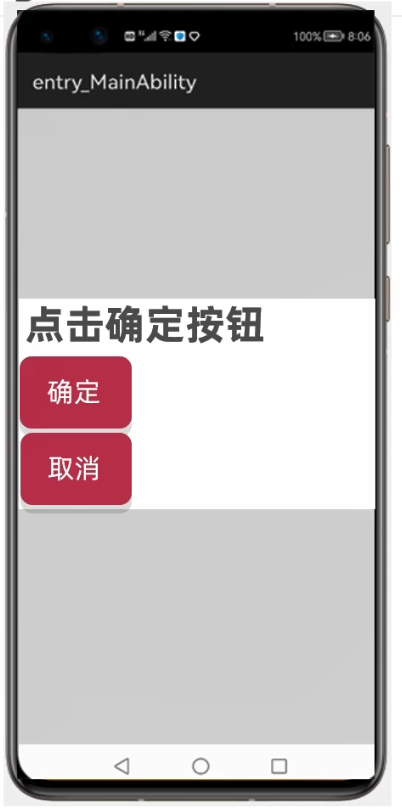
下面就實現下:
- 新建項目:DialogLayoutApplication
- <?xml version="1.0" encoding="utf-8"?>
- <DirectionalLayout
- xmlns:ohos="http://schemas.huawei.com/res/ohos"
- ohos:height="match_parent"
- ohos:width="match_parent"
- ohos:alignment="center"
- ohos:orientation="vertical">
- <Button
- ohos:id="$+id:but"
- ohos:height="match_content"
- ohos:width="match_content"
- ohos:text="點我"
- ohos:text_size="40fp"
- ohos:background_element="red"/>
- </DirectionalLayout>
- 彈框里面的內容也可以用 xml 來寫,新建一個布局文件
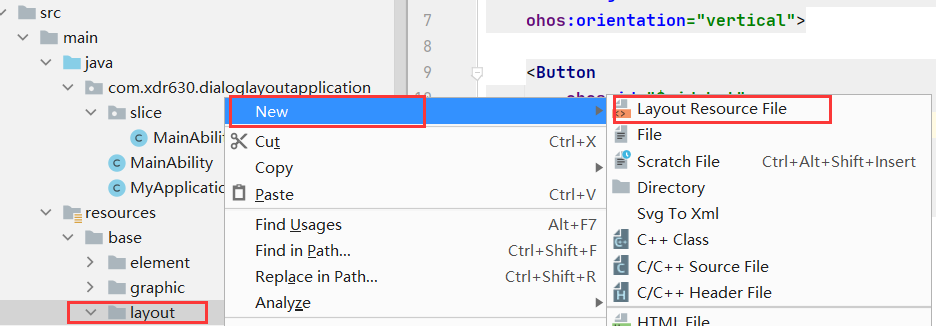
- 文件名不能是大寫的

- 上面的彈框組成:一個Text文本+兩個Button
- 生成彈框的布局文件后,首先改下布局文件的大小,默認的就是充滿整個屏幕的,改為包裹內容的就行了

- 文本的內容因為是變化的,所以在java代碼那里進行設置
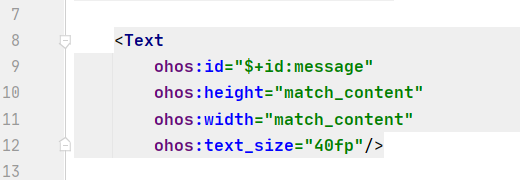
- 兩個按鈕如果不設置外邊距的話就會擠在一起,所以要加個上往外邊距
messagedialog
- <?xml version="1.0" encoding="utf-8"?>
- <DirectionalLayout
- xmlns:ohos="http://schemas.huawei.com/res/ohos"
- ohos:height="match_content"
- ohos:width="match_content"
- ohos:orientation="vertical">
- <Text
- ohos:id="$+id:message"
- ohos:height="match_content"
- ohos:width="match_content"
- ohos:text_size="40fp"/>
- <Button
- ohos:id="$+id:submit"
- ohos:height="match_content"
- ohos:width="match_content"
- ohos:text="確定"
- ohos:text_size="40fp"
- ohos:background_element="red"/>
- <Button
- ohos:id="$+id:cancel"
- ohos:height="match_content"
- ohos:width="match_content"
- ohos:text="取消"
- ohos:text_size="40fp"
- ohos:background_element="blue"
- ohos:top_margin="10vp"
- />
- </DirectionalLayout>
MainAbilitySlice
- package com.xdr630.dialoglayoutapplication.slice;
- import com.xdr630.dialoglayoutapplication.ResourceTable;
- import ohos.aafwk.ability.AbilitySlice;
- import ohos.aafwk.content.Intent;
- import ohos.agp.components.*;
- import ohos.agp.window.dialog.CommonDialog;
- public class MainAbilitySlice extends AbilitySlice implements Component.ClickedListener {
- @Override
- public void onStart(Intent intent) {
- super.onStart(intent);
- super.setUIContent(ResourceTable.Layout_ability_main);
- //1.找到布局中的按鈕
- Button but = (Button) findComponentById(ResourceTable.Id_but);
- //2.添加一個點擊事件
- but.setClickedListener(this);
- }
- @Override
- public void onActive() {
- super.onActive();
- }
- @Override
- public void onForeground(Intent intent) {
- super.onForeground(intent);
- }
- @Override
- public void onClick(Component component) {
- //把彈框展示出來
- //創建一個彈框對象
- CommonDialog cd = new CommonDialog(this);
- //大小是默認包裹內容的
- //彈框默認是居中設置的
- //彈框默認是透明的
- //彈框默認是直角的,可以把直角設置為圓角
- cd.setCornerRadius(15);
- //把 messagedialog 的 xml 文件加載到內存當中,交給彈框并且展示出來
- //加載 xml 文件并獲得一個布局對象
- //parse方法:加載一個 xml 文件,返回一個布局對象
- //參數一:要加載的 xml 文件
- //參數二:該 xml 文件是否跟其他 xml 文件有關。如果無關是獨立的,就寫 null 就行了
- //參數三:如果文件是獨立的,那么直接寫 false
- DirectionalLayout dl = (DirectionalLayout) LayoutScatter.getInstance(this).parse(ResourceTable.Layout_messagedialog, null, false);
- //要給布局里的文本和按鈕設置事件或者修改內容
- //此時需要用 dl 去調用,表示獲取的是 dl 這個布局里面的組件
- Text title = (Text) dl.findComponentById(ResourceTable.Id_message);
- Button submit = (Button) dl.findComponentById(ResourceTable.Id_submit);
- Button cancel = (Button) dl.findComponentById(ResourceTable.Id_cancel);
- //給title標題設置內容
- title.setText("請選擇下面的按鈕并點擊");
- //還需要給兩個按鈕添加單擊事件
- submit.setClickedListener(new Component.ClickedListener() {
- @Override
- public void onClick(Component component) {
- title.setText("點擊了確定按鈕");
- }
- });
- //取消按鈕也要添加點擊事件
- cancel.setClickedListener(new Component.ClickedListener() {
- @Override
- public void onClick(Component component) {
- //當點擊取消按鈕之后,把彈框關閉
- cd.destroy();
- }
- });
- //此時布局對象和彈框還沒有任何關系
- //還需要把布局對象交給彈框
- cd.setContentCustomComponent(dl);
- //讓彈框展示出來
- cd.show();
- }
- }
- 運行:
- 點擊后,就會彈出彈框
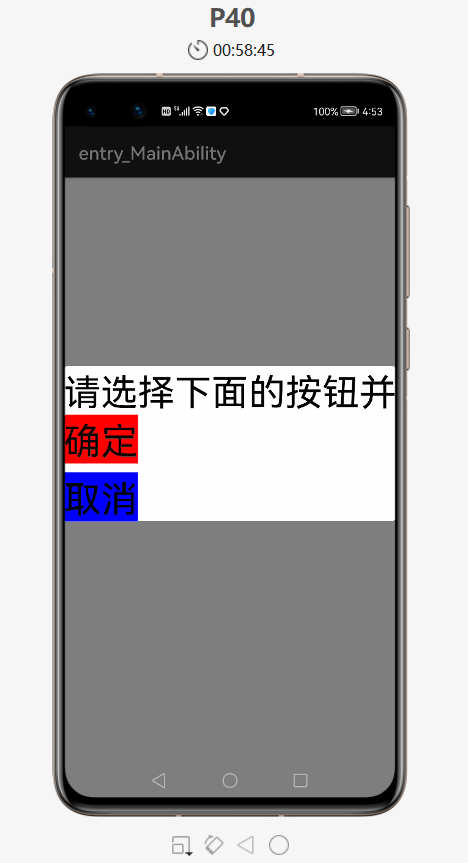
- 點擊彈框中的確定按鈕后,文本內容發生改變
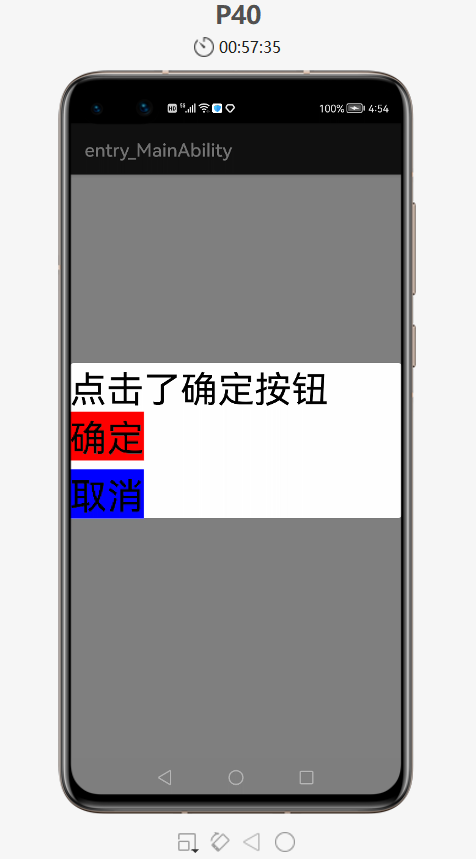
- 點擊取消按鈕后,彈框消失,恢復到原界面
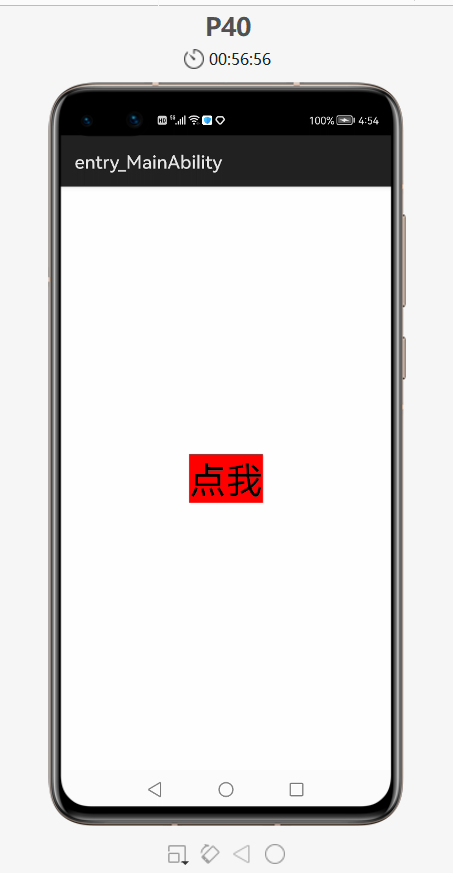
3. 優化代碼——抽取彈框工具類
- 在工作當中,如果需要用多個彈框,而每次都和上面一樣寫的話,就會造成代碼冗余,不方便管理
- 下面就把彈框抽取成一個工具類,當用到一個彈框的時候,直接調用工具類中的方法就可以了
- 創建一個工具類

- 創建一個彈框的工具類:MyDialog
- 當外界調用了這個方法之后,就會出現一個彈框
- 把上面的 OnClick 方法中的代碼剪切到上面的 showDialog 方法中
- 粘貼過來后,MyDialog類中部分代碼修改如下
- MainAbilitySlice類中修改如下,直接調用MyDialog中的方法,傳遞參數就行了
- 運行:
- 點擊確定按鈕后,發現Text文本內容是剛剛方法中傳遞過來















